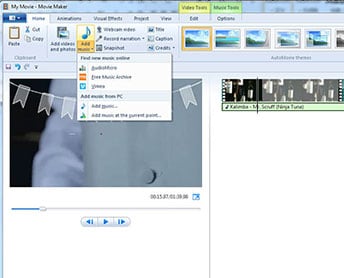Businesses can often be wedded to behaviours that stifle the innovation they claim to embrace. These behaviours are frequently unconscious -- a side effect of certain practices becoming entrenched in a company.
Here are 10 ways that businesses can inadvertently smother innovation without even realising it:
REFUSING TO UPSET THE CORE BUSINESS
Companies that refuse to consider any activity that might disrupt their established business risk ignoring technological and societal changes that will eventually eat away at their core.
Jeremy Cox, principal analyst with Ovum, said: "One of the problems that organisations have is asking 'Is it going to cannabilise our sales?' and that can be a blocker to innovation.
"They may say 'Don't upset the apple cart', but if their business doesn't then somebody else will."
Cox cited the software giant SAP as having successfully grappled with this dilemma. The German multi-national invested heavily in pushing its cloud-first strategy, potentially at the expense of its core software businesses. The move is paying off, at least in terms of growth, with revenues from cloud subscriptions and support up 129 percent year-on-year during the first quarter of 2015, compared to 16 percent growth in SAP's long-established business of software licensing and support.
In a report entitled Taking Control of Innovation to Drive Customer Relevance and GrowthCox highlights Olivetti, Digital Equipment Corporation and Wang as "former darlings of the investment community that failed to sense change and act on it".
The danger is large companies can become fixated on the idea that they produce a certain type of good or service and are unable to accept that in a changing environment they need to shift their business towards doing something else, said Mark Raskino, VP with analyst house Gartner.
"One of the biggest problems is the sense that firms specialise in industries and then say 'It may be the case that the customer is asking us to do this but that's not what we do'. That's incredibly dangerous because technology today is really messing around with the boundaries between sectors."
Companies may have to accept dramatic shifts at the core of their businesses to avoid losing market share, he said, giving the example of the tobacco industry having to meet growing demand for e-cigarettes.
BEING MISERLY
Beyond just giving ideas verbal backing, companies need to find hard cash to get innovations off the ground. Most companies have a product or service that is a cash cow, and Ovum recommends milking it to fund new concepts.
In particular, Ovum's report says that firms should not make immediate business needs a condition of investment, but should be prepared to provide backing on the grounds of future potential.
"If you want an IT department that will innovate, it must have some money to experiment with," said Gartner's Raskino.
"It's not been untypical for IT departments to have almost zero R&D budget. Of the money you've got to spend on IT at the beginning of the year, you need to ask what proportion of that you are leaving open with 'R&D and innovation' written next to it?"
Another consideration is that firms may overestimate the cost of experimenting. For instance, the London-based analytics start-up GoSquared recently discussed how it was able to exploit the pay-per-use, on-demand nature of Amazon Web Services' public cloud infrastructure.
GoSquared CTO Geoff Wagstaff said that being able to spin servers, storage and databases up and down on demand had enabled it to experiment with different distributed databases and search technologies before committing to an architecture.
As an Economist Intelligence Unit report points out: "In industries with lower barriers to entry, technology is driving bigger changes. Over the past decade persistent reductions in technology costs have made new business models feasible; this trend will continue, with companies competing far less on capital deployed and far more on the strength of their ideas".
NOT SEEING THE BIGGER PICTURE
Focusing too heavily on short-term outcomes can exhaust a company's opportunity to innovate.
Constantly fighting fires to ensure revenues and profits are in line with forecasts and to maintain the confidence of shareholders is a common impulse for managers. Unfortunately this drive to meet targets can leave little time for anything beyond keeping the business ticking over.
"The dominant job of management is to keep this enormously complex enterprise going, with almost the exact same outcome year over year, which is a miracle in itself because the world outside is changing," said Gartner's Raskino.
"You have in management a machine that is running incredibly hard every day just to keep thing operating. That operational mindset is to reduce and repulse any change that doesn't have to happen.
"It becomes a fundamental problem for innovators who are trying to change stuff when you essentially have a corporate machine whose job is to lock everything down as much as possible."
The danger is, Raskino said, that this approach can create a culture where innovating around what the business does is off the table.
LISTENING TO YOUR CUSTOMERS, INSTEAD OF LEARNING FROM THEM
Apple founder Steve Jobs once famously said that "People don't know what they want until you show it to them".
Harvard Business School professor Clayton Christensen, who coined the phrase 'disruptive innovation', agrees, saying that customers are often not able to visualise how a product or service could better serve them.
Instead of straight-out asking customers what they want, Christensen suggests examining their habits carefully to learn what they want to do in their lives and then creating a product or service that meets that need.
Ovum's Cox added it was also important for firms to check they're not working off assumptions about customer behaviour, rather than data on actual customer requirements and frustrations.
DISMISSING EARLIER FAILURES
Companies that pooh-pooh ideas as old hat could be shutting the door to valuable opportunities.
As Gartner's Raskino points out, just because an idea crashed and burned earlier, it doesn't mean that it won't succeed now.
Since the original idea was suggested, technologies could have matured to the point they have become easier to use and more widely adopted, he said, so the conditions for it to succeed may now exist.
"Ideas move in fits and starts. They go away and come back again. You can always find an antecedent," said Raskino, giving the example of online banking using phones with WAP support in the early 2000s, which was such a failure that it deterred banks from returning to the idea of mobile banking for years.
"But these ideas are never exactly the same. WAP banking versus app banking are not the same. Technologies and cultures change."
The problem for companies, said Raskino, is that once an idea has been dismissed in this fashion by a senior member of staff it may never get brought up again.
SUGAR-COATING REJECTIONS
Managers may think it's better to suggest an employee's idea might be trialled at a later date than rejecting it outright.
However, if that manager has no intention of reassessing that idea, and is simply letting the employee down gently, then that may discourage people from coming forward again.
"You're doing middle-management and you're trying to be kind to people so instead of saying 'No, we're not going to do that', you find some other kind way of saying it. You say 'We haven't got the resources right now but we'll take a look at it next year shall we?," said Gartner's Raskino.
If none of the ideas flagged as something 'We could try next year' are raised again, then the ideas may be lost and staff may come to feel there is no point making suggestions in future he said.
CONFUSING NEW TECHNOLOGY WITH INNOVATION
It's a mistake to think that the path to innovation lies in implementing the latest big data analytics package or buying a 3D printer.
Technology may be needed to realise innovation, but it shouldn't come first, said Gartner's Raskino.
"Innovation is doing new things in new ways for customers, some of which may or may not involve new technology."
"This idea that simply doing show-and-tell with new technology is somehow innovation in itself is pretty lacklustre, and it's where IT departments rapidly lose face."
"Your job is more than just to bring a 3D printer into the office and demonstrate it and say 'Look this is new technology'. Your job is to think about the key problems of the business today -- what can we do new, different or better than we could have done five years ago?"
"Part of that is probably new technology, but a lot of it is probably existing and maturing technology. The business creativity is the missing element," said Raskino.
NEVER WANTING TO BE FIRST
The first companies to market with a product or service face significant risk, but being a follower carries its own dangers.
"The paradox is that, if you decide not to try to lead, you can become too slow and unresponsive to achieve second or third place," said Gartner analyst Mark Raskino in his report 10 Innovation-Killing Phrases That CIOs Should Refute.
According to Ovum's Cox, being a fast follower "is likely to become a bigger problem than it has been in the past because things are changing so rapidly" and there is less time to capitalise on new markets.
"It's almost like the cycle times to innovation are having to be collapsed because buyer behaviour is changing all the time," said Cox.
HAVING INNOVATION SILOS
Research and development typically requires deep knowledge of particular subjects, but there needs to be scope for different research teams to collaborate.
Splitting research teams into isolated, highly specialised units will limit a firm's ability to identify which areas of research are complementary to each other and could be combined to create new products and services.
"An example would be the train manufacturer Bombardier. They had lots of engineers who are specialists in developing different parts of a train working in isolation with each other," said Ovum's Cox.
"What the head of the company did was to throw down a challenge to develop the maintenance-free train. The point he was making was to think beyond the incremental [individual areas of research] and try to come up with new things and collaborate together on particular challenges. As a result of that a lot of innovation has emerged."
Ovum recommends formalising collaboration between research teams by implementing an innovation-management process.
REFUSING TO TAKE RISKS
Being risk-averse can still be a sensible approach, but it shouldn't be a business's default stance.
Enterprises that always favour business as usual often lack the will to bet on unproven but potentially disruptive innovations, according to the Ovum report Taking Control of Innovation to Drive Customer Relevance and Growth.
"In the industrial age this would have been deemed the virtue of prudence, but in today's hyper-volatile market conditions such a cultural attitude risks institutional myopia," the report states.
Ovum's report highlights the dangers of standing still on core product and service offerings, citing figures that the average lifespan of an enterprise back in the 1950s was 75 years, compared to 15 today.
"Start-ups will do a lot of stuff on faith that corporates aren't willing to do. But often those techniques aren't that dangerous, they just don't fit with the tick-box culture that large corporates like to see," said Gartner's Raskino.







 *
*

































